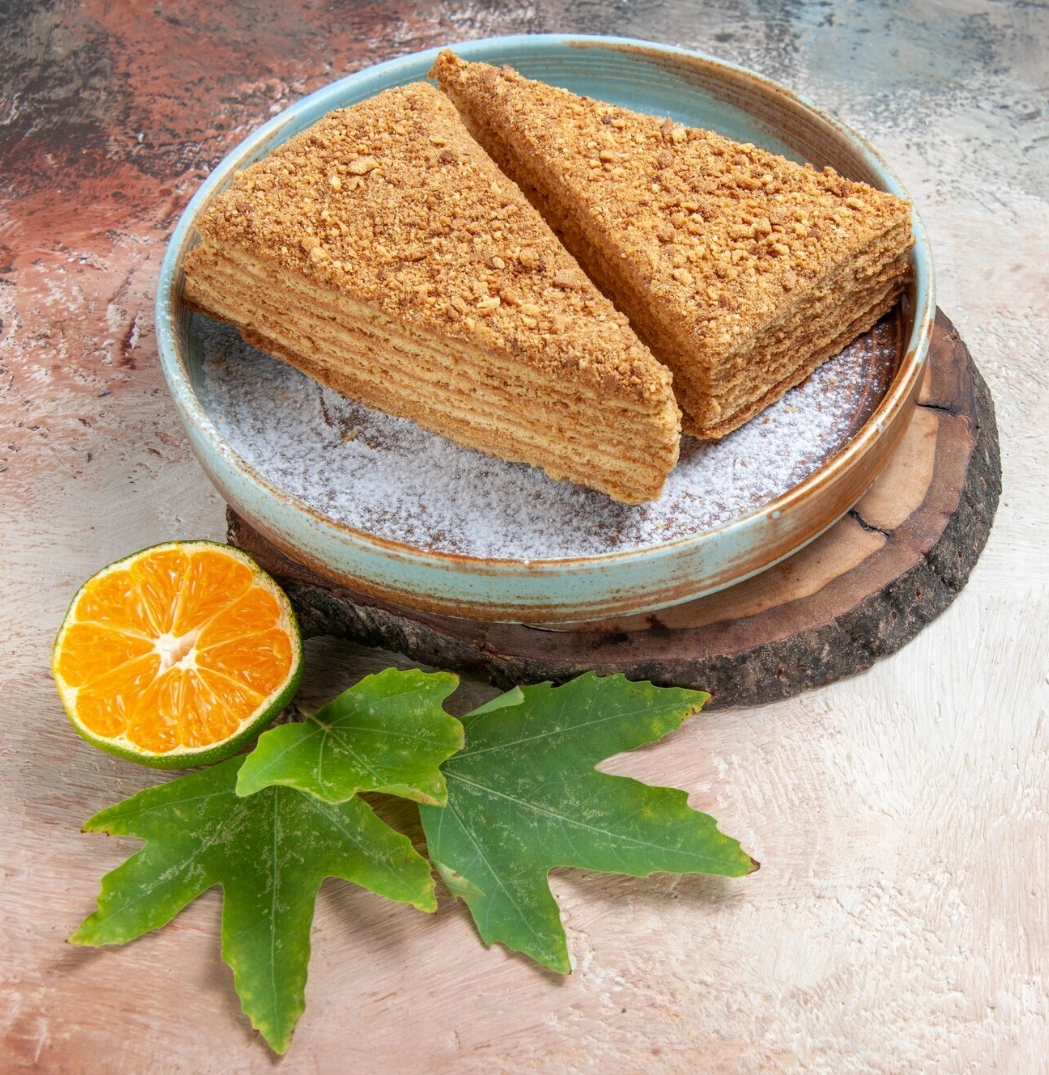

Top Health Benefits of Russian Honey Cake (Medovik) You Need to Know
Medovik, or Russian Honey Cake, while being an indulgent dessert, offers certain nutritional aspects worth noting. The inclusion of natural honey not only adds a rich flavor but also provides antioxidants and trace minerals that support immune health. Eggs contribute high-quality protein and essential vitamins like B12 and D, while the flour supplies carbohydrates that serve as a primary energy source. The sour cream or whipped cream used in the filling delivers calcium and fat-soluble vitamins such as A and E. However, it is important to note that Medovik is also high in sugars and saturated fats due to the generous amounts of sugar, butter, and cream, making it a calorie-dense treat. Though not suitable as an everyday snack, when enjoyed in moderation, it can offer a satisfying energy boost and pleasure as part of a balanced diet.
Recipe :
For 8 people
Enjoy your decadent, creamy, and irresistibly layered Russian Honey Cake!
Preparing Medovik requires attention to detail, patience, and proper timing to achieve the perfect texture and flavor. It’s essential to allow the honey, sugar, and butter mixture to melt slowly over low heat to prevent caramelization or burning, which can impact the cake’s taste. Adding the eggs while the mixture is still warm (but not hot) is crucial to avoid curdling. When rolling out the dough into thin discs, aim for even thickness to ensure uniform baking. Overbaking the layers will make them too hard and difficult to soften later, while underbaking may leave them doughy. After layering with cream, the cake must rest in the fridge for at least 6 hours—ideally overnight—for the layers to absorb moisture from the cream and become tender. Clean and chill all utensils used for the cream to ensure it stays firm during whipping. Small details like trimming the edges and saving the crumbs for garnish elevate the cake’s appearance and presentation.

Due to its rich composition, Medovik may not be suitable for individuals on specific dietary regimens such as low-carb, ketogenic, or low-fat diets. It contains high levels of carbohydrates and sugars, making it incompatible with diabetic meal plans unless modified. The dessert also includes gluten from wheat flour and dairy from cream and butter, which can be problematic for people with gluten intolerance or lactose sensitivity. However, for those not restricted by these dietary needs, it can be adapted slightly—for example, using gluten-free flour, low-fat cream, or sugar substitutes—to better align with health goals. Vegans and those following plant-based diets would need significant alterations to replace eggs, dairy, and honey with alternatives like flax eggs, plant-based cream, and maple syrup. As it stands, Medovik is best enjoyed occasionally, especially during celebrations, when the focus is on taste and tradition more than dietary strictness.
...